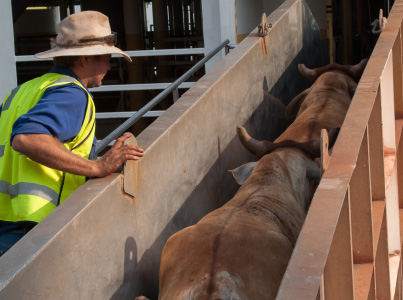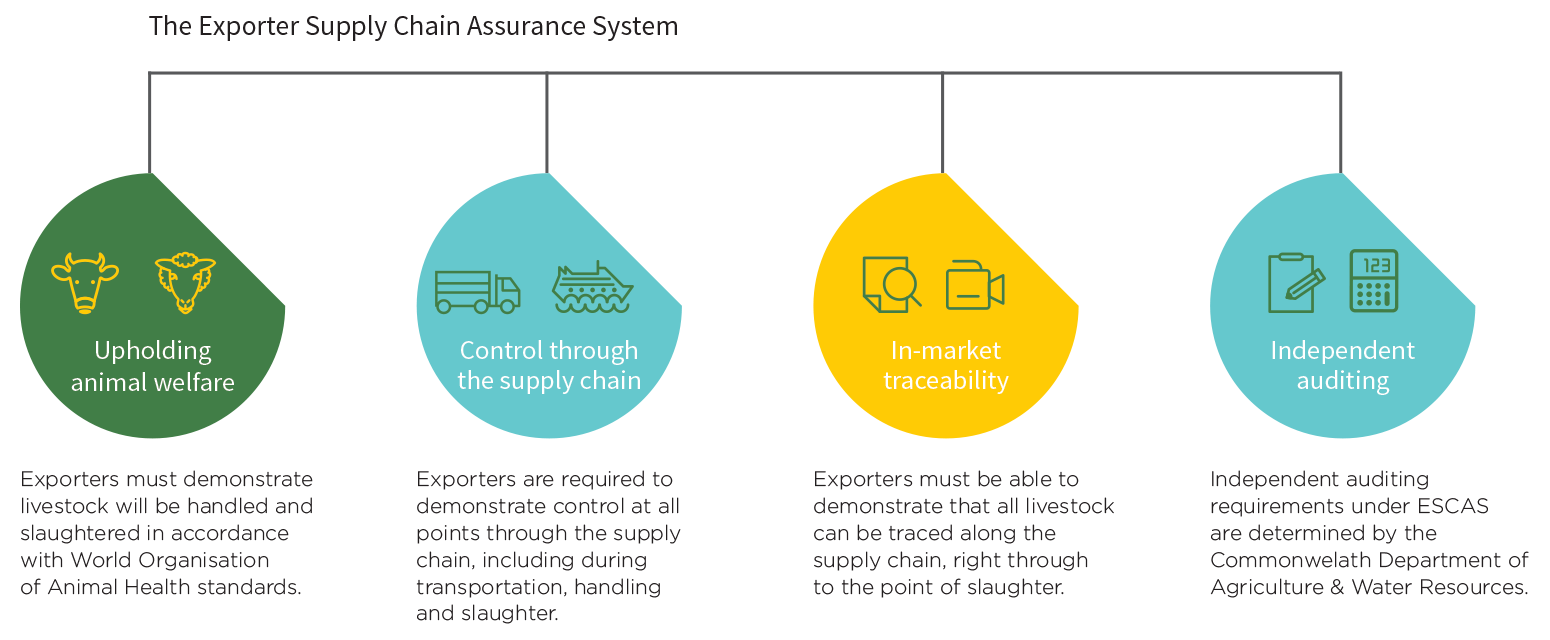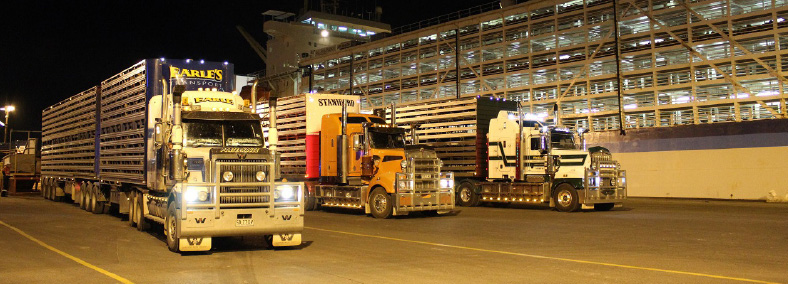Under the laws and regulations that control the activities of Australian livestock exporters, exporters must comply with a range of stringent requirements that include:
- Exporters must be licensed by the Australian Government
- Livestock must be selected, prepared and cared for in compliance with legislated animal welfare standards
- Livestock must only be prepared in Australian Government-approved quarantine premises, known as registered premises
- Skilled personnel including industry-accredited stockpersons, and in some cases government approved veterinarians, must accompany and care for the livestock on the voyage (via sea and air).
- Livestock export vessels must hold an Australian Certificate for the Carriage of Livestock issued by the Australian Maritime Safety Authority (AMSA)
- Exporters must maintain control, traceability and ensure animal welfare of livestock from discharge through to the point of slaughter in their supply chains
- Facilities in exporter supply chains must be independently audited on a regular basis in line with the government’s auditing and risk management requirements
- Exporters must report on the outcomes of each voyage, including mortalities, which are then reported on a six-monthly basis to the Australian Parliament. If mortalities exceed legislated levels, a comprehensive investigation is undertaken and conditions may be placed on future shipments to mitigate risks
- Exporters must provide the Australian Government with an end of processing (EOP) report (within 10 days of the slaughter of the last animal within a consignment for cattle and buffalo). An exporter must also submit an independent performance audit report (IPAR).



